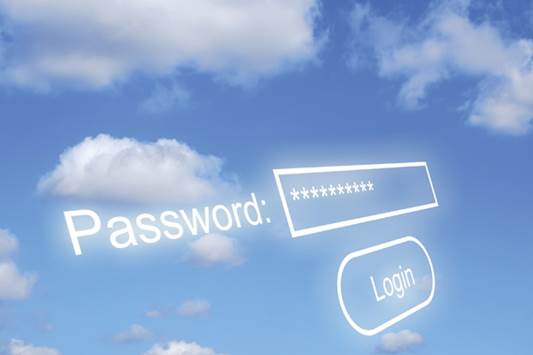Common concerns
Despite the business benefits the cloud
offers, numerous concerns remain. Among the concerns that Gartner hears
frequently, says Wolf, are issues regarding security, lock-in, and higher costs
relative to internal solutions. Some Gartner clients have expressed concerns
that cloud services are not much different from traditional outsourcing,
leading to worries concerning lock-in, long term costs, and high exit costs if
they should want to switch providers or move IT services back in-house.

Among
the concerns of the computing offers are issues regarding security, lock-in,
and higher costs relative to internal solutions
Security-wise, DeCarlo says “one of the big
things we lack is just a general, industry-wide standard of what is good-enough
cloud security for not necessarily an application that involves a lot of secret
and private data, but an application that is still important to an
organization.” The Cloud Security Alliance (www.cloudsecurityalliance.org)
and others are working on specifications and standards for cloud security, she
says, but “there’s nothing really providing a good base-line for most
private-sector enterprises to really evaluate whether the security provider has
the capabilities. They need to ensure that the application is not only stable
but protected, or whatever the IT service it is that is being delivered via the
cloud.”
Other concerns include cloud pricing models
and how they compare to traditional licensing models and SLAs (service level
agreements) in regard to standards and what should be considered acceptable,
DeCarlo says. Server uptime and network availability receive considerable
attention, she says, but there’s also a question of whether different
availability-related guidelines for the cloud and particular applications
should exist and what they should include. “What the enterprise buyer wants is
not compensation,” she says. “They want a guarantee [downtime is] not going to
happen.” Overall, DeCarlo says, “I would have expected more progress on that
front than what we’ve seen.”
Sloan says data and processing mobility, in
terms of companies handing their data to SaaS providers, are also concerns.
“Maybe in a year you find another cloud provider that’s better or decide
on-premise is a better approach. How hard is it to get that data back?” Sloan
says. That is a concern because there are many cloud-based service providers,
and there isn’t a baseline standard for integration or migration.
The cloud’s impact

What
smart providers are starting to do is put more control in the hands of the
buyers in terms of self-provisioning
Interestingly, DeCarlo says, before an
organization even purchases a cloud service its perception of the service and
of what the provider should make available, have likely already been impacted.
“And a lot of this is driven by the economy, but it’s also the understanding
that people just aren’t satisfied with the sort of static model of IT service
delivery,” she says. Companies are looking for more flexibility and agility in
contracting models, she says. DeCarlo says much more flexibility must be built
into service contracts, even if the services delivered are static. Companies
are looking for providers to not overbill them, and they’re looking for ways to
most effectively use the capacity they’re purchasing to get optimal use from
what they’re paying for, she says.
There is an increasing comfort level among
companies using a third-party service as an adjunct to internal IT services and
“not being so threatened by that,” DeCarlo says. Organizations, she says, “are
starting to see, and what smart providers are starting to do is put more
control in the hands of the buyers in terms of self-provisioning,” something that
gives buyers a sense of being able to use exactly what they need on a
supplemental basis and not necessarily having to go to a third-party for
everything. Additionally, a change in companies’ thinking about out-tasking vs.
outsourcing is impacting the cloud in that purchasing organizations are
starting to expect more control over all services, she says. “They want more
capabilities in their hands, in their dash-boards, being able to see more of
what’s happening with their services, getting more reports, and getting options
for ordering things,” DeCarlo says.
The cloud’s future
As security and compliance concerns
diminish with time, Wolf expects cloud computing adoption to continue to
increase at a steady rate. Sloan, meanwhile, cites past research in which
“nobody saw that, say, in five years everything would be cloud-based, but also
no one said they thought cloud was a lash in the pan and they weren’t going to
use it.”

The
cloud would be “the natural home for certain key applications and processes.”
The vast majority of respondents, he says,
felt the cloud would be “the natural home for certain key applications and
processes.” Some applications and infrastructure will likely always remain
in-house whether due to cost-effectiveness or other reasons, Sloan says, but
this is where more interest in hybrid or federated clouds will result.
“The future is definitely going to be in
clouds of some kind,” Sloan says. “In the foreseeable future, there will be
internal infrastructure but that internal infrastructure will be more
cloud-like. But then you’re going to see more of a hybrid future where it
really comes down to sort of commodity metrics. What is the cost per unit of
storage or processing to use this application in our internal cloud vs.
externally? Those sort of business decisions will be behind where those things
live,” he says.
Based on current interest levels and what
providers are investing in, DeCarlo predicts in five years and beyond we’ll
start to see a significantly larger percentage of IT needs met through the
cloud, although she isn’t certain this wider adoption of IT services will ever
reach a majority.